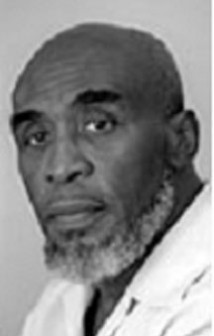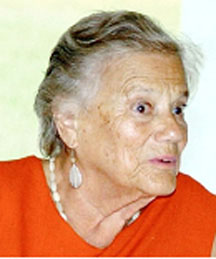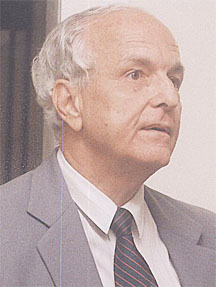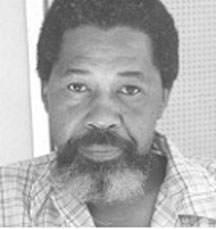By Nigel Westmaas
Context
The New World, the inspiration of Lloyd Best in 1957, was a loosely organized grouping of intellectuals, educators, cultural workers, writers and activists mainly from the anglophone Caribbean or with Caribbean origins and interests. Together with its principal means of organization and communication through speeches, small group discussions and its publications, including the journal (Jamaica) and quarterly (Guyana), the New World, at one point or another in the heady decade of the 1960s, it boasted groups and associates in Antigua, Guyana, Barbados, St Vincent, Jamaica, England, Puerto Rico, St Kitts, Canada (Montreal), and the USA (Washington, New York and Chicago).
At the time in which the New World was conceived and operated, the Caribbean, like other parts of the world was in the ferment of pre-independence change. The Cold War was in a state of full blown refrigeration, and formal anti-colonialism was at its pinnacle of optimism and activity amidst the fitful retreat of the former empire(s). With anti-colonialism as its wellspring, one of the great seismic shifts in the thinking of peoples under colonialism was held in the Bandung (Indonesia) conference of 1955. With forward looking proclamations and romance with the new possibilities for the peoples of Afro-Asia it was a ground-breaking event. Whatever its limitations, Bandung kindled the ideas of statehood and sovereignty along with thoughts of social change and transformation and was in effect, the birth of the Non-Aligned Movement.

The muster at Bandung was supplemented by sometimes contrasting events like the Soviet invasion of Hungary in 1956. Likewise, Ghana’s independence in 1957; the ever dynamic labour movement; radical politics; the re-affirmation of Pan-Africanism; and the debate on Caribbean Federation were all active in ‘present’ memory when the New World became a reality. The Cuban Revolution of 1959 extended the radical dimension further than the social-democratic organizing of the era, and there were other ideological and organizational proposals that summoned the region to join the ‘future’ and prepare for it with a new political culture and order rooted in critical thinking, Caribbean style.
Evident too was the frenetic energy of Caribbean nationalist leaders and their organisations with their hopes and expectations. In Trinidad, Guyana, Jamaica and across the region and the diaspora there existed political movements pursuing palpably different objectives from those advocated by the extreme ends of conservative colonial thinking and communism. There was also fundamental disagreement with traditional economic and socio-political assessments of the way forward for states in and out of the colonial context. The New World, in short, was witness to these developments and instrumental in the field of ideas, pushing back at conventional ways of seeing and acting. Powerful thinkers and visionaries like writer and activist CLR James and economist Arthur Lewis were equally influential on the group-think of the New World, although the latter’s economic models were critiqued by New Worldists.

The informal structure of the New World was present from the outset. One participant, Andaiye, spoke to its untailored nature: “I just kind of fell into it… it’s a small world, and this person introduced you to that person, and so on. I remember the first night going into this house and there meeting Lloyd Best and all the others.”
Over time New World members, contributors and writers across the region included David de Caires, James Millette, Edwin Carrington, Sylvia Wynter, Norman Girvan, George Beckford, Miles Fitzpatrick, Roy Augier, Syl Lowhar, George Lamming, William Demas, Kari Levitt, Andaiye (then Sandra Williams), and of course Lloyd Best himself. Because of New World’s informal nature there is some uncertainty on whether leading regional economists and thinkers like Clive Thomas, Havelock Brewster, and Alister McIntyre were actual members of New World. These, like others including Donald Locke, Wilson Harris, Jan Carew, Martin Carter, Moses Bhagwan, Jocelyn Springer, contributed to the journal and the fortnightly.
Currents in New World thought

In one of its earliest statements of purpose the New World described itself as a “movement which aims to transform the mode of living and thinking in the region.” Invariably, the movement rejected the “uncritical acceptance of dogmas and ideologies imported from outside and bases its ideas for the future of the area on an unfettered analysis of the experiences and existing conditions of the region.”
As many of the criticisms and proposals were outside the mainstream political narrative the New World was received with a mixture of skepticism and hostility and traditional political thinking found New World ideas “radical”. In an “appraisal” paper delivered to delegates of the New World group held in Jamaica in 1965 the new worldists stated that they wished their “radicalism” to be interpreted “as nothing more or less that the sustained application of thought to the matters that concerned us deeply – starting from a position free of restrictive doctrine and arriving. It was around this time that Lloyd Best’s Plantation economy school of thought germinated and he published much later, with Kari Levitt, Essays on the Theory of Plantation Economy.

One of the template indications of the New World’s confrontation of old shibboleths was Lloyd Best’s challenge to Eric Williams, the author of Capitalism and Slavery and Prime Minister of Trinidad & Tobago. This was expressed in ‘Chaguaramas to Slavery?’ Published in 1965, this article was Best’s counter to William’s famous speech ‘Slavery to Chaguaramas.’ With the inversion of the title, Best attacked the foundation of the ideological and political base of Williams. He went on to attack the “doctah politics” of Williams and the “dominance of a charismatic hero whose ‘brain’ was deemed to be so ‘big’ and ‘long’ that it was virtually all that was needed to affect the kind of basic transformation required by the society.”
New World and Guyana
Guyana was also a pivotal location in New World activity and thought. This was not a surprise as the country (colony) itself was undergoing significant turmoil and Guyanese were active participants not only as a barometer of the ideals of the New World thinking but also because like other territories, Guyana was a trial zone for potential new ideas and directions in post-colonial nation building.
The New World was established in Guyana in 1963 and one of its seminal documents, ‘Working Notes towards the Unification of Guyana’ was published the same year when Guyana was in the middle of its pre-independence ferment and disillusion. New World (Guyana) soon became a close ‘outside the mainstream’ intellectual responder to things political and cultural in Guyana.
The energetic publication of New World fortnightly (always financially weak – at its height it published in “excess of 600 copies”) in Guyana allowed for new outlooks at the cultural and political levels and art and cultural review, alongside seminal pieces on the Guyana press, trade unions, and economy. Some stood out for reviewing skills. Donald Locke’s brilliant assessment of Guyanese artist extraordinaire ER Burrowes was valuable at a time when the significance of Burrowes’ work was hardly acknowledged. Locke also extended his skilled, artistic observation to the work of another key Guyanese artist, Phillip Moore. Jan Carew, Wilson Harris, Martin Carter, Helen Taitt, Ken Corsbie, and others were likewise constantly featured in the pages of the New World fortnightly.
The PYO and YSM
At the political level, inspired mainly by de Caires and Fitzpatrick, there were very insightful critiques of the activity of two main forces in the country, the PPP and PNC. In 1965 the New World reported extensively on the dramatic but short-lived rebellion of the youth arms (PYO and YSM) of the two monoliths in the debates over race relations and independence (not only the country’s but their own). In the YSM case members of the organisation energetically challenged Forbes Burnham’s diplomatic tactics at the time, tactics chiefly aimed at appeasing the West. Burnham quickly shut down any glimmer of autonomy from the YSM especially as symbolised by one of the youth arm’s leading lights, Stanley Hugh. Hugh and the YSM had severely criticised the leadership of the PNC and even described Burnham as “demagogic.”
The PYO’s fate was even more disastrous for independent thinkers. When the PYO rally at Independence square leaned towards support of Guyana’s independence it read a statement which stated in one remarkable passage:
“We state categorically, that we fought for independence under Dr Cheddi Jagan, we would fight for independence even now that Mr. Forbes Burnham is the Premier. We consider it would be illogical, unpatriotic and hypocritical to oppose independence simply because a reactionary has assumed the Premiership.”
There was an even a sharper piece of heresy from the PYO in the same statement:
“The PYO states categorically, that it owes no ideological allegiance to, and it follows no international line set down by any forces outside our territory. The PYO works from the basis of what is good for Guyana, and what can work for Guyana.”
There was immediate fallout over the statement. One of the leaders in the PYO at the time Moses Bhagwan, was subsequently disciplined, suspended and soon thereafter resigned from the PYO and the party.
The final issue of the New World publications (Guyana) was published in 1966 after a creditable fifty issues, but its ideas continued to circulate and influence critical thinking way after its unofficial demise. By the 1970s most of the remnants of New World in the key territories had disappeared or transformed into mini-political groups challenging the existing order. In a sudden move in 1968 at the Montreal New World group meeting, its patriarch Lloyd Best announced he was shutting down New World to the startled gathering. The New World was however more than one individual and the ideas of the movement just metamorphosed into newer organisations and ideas for change. Best went on to launch the Tapia House movement in Trinidad and Tobago.
Later, long after its Guyana demise, the late David de Caires wrote, in the spirit of New World thinking, an open letter in 1986 to the three main political parties, the PNC, PPP and WPA. As they were all considered left-wing parties de Caires invited them to define their relationship to democracy and pushed the broader question of the difference in the ‘Marxism-Leninism’ of each. It was an open question designed to elicit responses from the parties on their positions towards free elections and multi-party systems at home in the Caribbean. In some sense it was the second effort to establish a conversation on the subject. In 1966, in the famous independence issue of New World de Caires and Fitzpatrick had asked some of the same questions in an article titled ‘Twenty Years of Politics in our Land.’
Legacy
While the New World group was incontestably an important and underestimated contributor to Caribbean thinking it was relatively silent with other critical issues.
For one thing, academically oriented and middle class in membership and outlook, it was generally unsuccessful in reaching out to other grassroots wisdoms, including the Rastafari and non-conformist religious orientations and poets and artists of the street.
Another weak link of New World thought and action was in the area of gender. A significantly male dominated group, there were a handful of women in New World and modest gender-related discussion in their publications. While the era was admittedly hostile to gender equality this does not explain why there was discernible ‘new’ thinking in economic, socio-political and cultural spheres and none in gender.
As Norman Girvan notes, the tension between “thought” and “action” was a constant dilemma and concern for the New World and this might have played a role in its early demise. In a searing critique of Lloyd Best, leading New Worldist James Millette in The Thought Of New World: The Quest For Decolonisation (edited by Brian Meeks and Norman Girvan) argues that there was always a political agenda, but one signified by the absence of “class” and that “since 1968, when the Walter Rodney crisis [in Jamaica] announced the arrival of a more radical politicisation of the Caribbean people, Lloyd Best and the Tapia House movement have been running in the rear of the mass movement in Trinidad and Tobago and the Caribbean.” Indeed Rodney was once invited by Norman Girvan to join the group but declined stating that “all this was interesting but I’m not really into all of that. I am going to go into the ghettos and ground with the Rastafarians and this is what we need to do, learn from the masses…”
Today some of the innovative debates and proposals of the New World of the 1960s, if seen, would still resonate in the Caribbean and Guyana – either as unfulfilled promise or as potential model for critical thinking in this newer but hardly better Caribbean.









